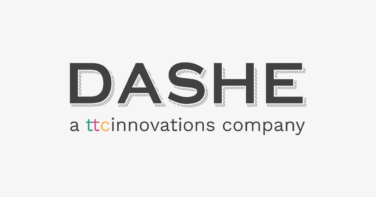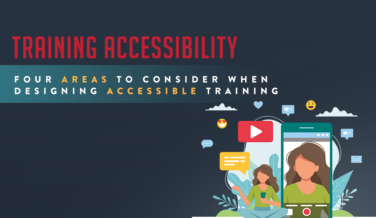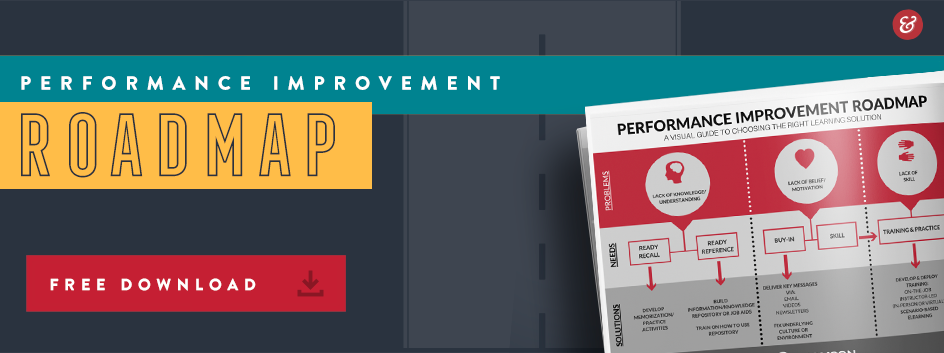Getting Started with Performance Support in Your Organization
The logic behind performance support is simple. You boost learner motivation, while also ensuring that training is reinforced, retained, and applied. Additionally, you drive a culture of continuous learning throughout your organization.
What exactly is performance support?
Performance support is a training method grounded in three primary learning principles: continuous learning, learning by doing, and knowledge on demand. These principles allow learners to have constant access to training, the capacity to apply their knowledge through hands-on activities, as well as accessing the information they need, when they need it. Performance support can be used as supplemental to training and, in some cases, can replace more conventional training with self-directed learning in the flow of work.
Performance support is used to help employees apply newly learned skills, solve problems, and more readily perform tasks that require ready references or a step-by-step refresher. Performance support generally comes in the form of easy-to-use Performance support tools (PSTs), also called learning aids or job aids, that are embedded in the workflow. These types of tools can be as simple as a printed cheat sheet or checklist or as complex as an online knowledge base, commonly referred to as an electronic performance support (EPSS).
By allowing your employees to access the information they need, whether it is to answer a question or search for a step-by-step process, they have the capability to instantly apply that knowledge to solve their problems. This supports maintaining a skilled, knowledgeable workforce throughout your organization. L&D teams should also be utilizing this process for onboarding new employees, assuring they have all the information they need to do their jobs efficiently and effectively from day one.
What are the benefits of using performance support?
Performance support overcomes several challenges that teams and leaders face in L&D. Take the forgetting curve. According to research done by Ebbinghouse and others, retention of learning content drops by at least 70% in the first day if not refreshed or practiced. Performance support gives the power back to the learners. It gives them control over their own training, and access to materials when it is most useful to them. It is not the goal of the L&D teams to cram training into intensive, high-impact courses anymore. The ultimate role of L&D teams and leaders is to optimize the information they are providing and make it beneficial for the learners, which in turns makes it valuable for the organization.
From improved learning outcomes to higher return on investment, there are several benefits of implementing performance support that many organizations are unaware of. Performance support is motivation for learners. People, in general, are often motivated to learn, and retain information, when the problem is right in front of them. L&D teams can take advantage of these opportunities as learning experiences by developing performance support tools that employees can have access to when faced with a problem, whether it is a content database or video library.
In addition to empowering employees, giving access to information in real-time, and providing content in a multitude of formats, performance support also allows for managing business rules, capturing, and mapping data, and analyzing the use and progress of the training platforms.
Optimizing Your Content for Performance Support
Performance support does not just occur overnight. It requires a robust knowledge base with learning content. Effective performance support should include content that is relevant, up-to-date, compact, easy to access, and quick to utilize.
Performance support gives your employees the ability to perform their roles more effectively, with less reliance on classroom training. Learners begin to feel more empowered and confident on the job, knowing they can easily access the information they need, when they need it. Consider microlearning as a means for performance support, and provide bite-size chunks of information, as needed.
A well-designed performance support system gives users quick access to:
- Step-by-step instructions and processes
- Visual aides to show how tasks fit into a larger business process
- A clear understanding between organizational roles and functions
- Videos, eLearning content, and more
- Product information, specs, pricing, or any content that is too lengthy or complex to memorize and retain
Performance support often lacks within organizations because they are unsure of what it exactly is, or where to begin. L&D teams needs to shift their focus over to performance support and become proficient with integrating learning into the flow of work. By enhancing on-the-job learning availability, you’ll have a substantial impact on employee performance company-wide.
The Right Time for Performance Support
Organizations often struggle with the when and how to implement performance support. For some organizations, this struggle is due to lack of buy-in from learners and leaders who may not understand the benefits and, therefore, “prefer” the status quo. In other cases, the issue may be not knowing where to start or an assumption that it difficult to implement and may require skills and technology not readily available. Regardless, the right time to implement it is now, and you can start with simple, low-tech solutions. A level of performance support should always be available to your employees. Keep in mind, performance support is not formal training. There is no need to set aside specific time to access the training materials. Keep the information crisp, and concise by leveraging microlearning as your training method and you will be able to successfully bridge gaps between training and application by having information readily accessible to your team.
Continue reading

Dashe joins ttcInnovations
Learn More
Embracing the Future: Early Adopters of Generative AI for Learning
Learn More
Four Areas To Consider When Designing Accessible Training
Learn MoreCommitted to
finding solutions

